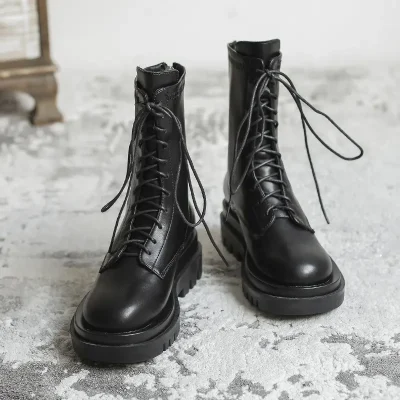Choosing eco-friendly boot soles is an excellent way to reduce your environmental impact while still enjoying high-quality footwear. Here are some sustainable choices for eco-friendly boot soles:
1. Recycled Rubber Soles
- Material Source: Made from recycled rubber, often sourced from recycled tires or other rubber products.
- Benefits: Reduces waste by repurposing existing materials. Provides durability and traction similar to traditional rubber soles.
- Applications: Suitable for a wide range of boot types, including hiking boots, work boots, and casual footwear.
2. Biodegradable Rubber Soles
- Material Source: Derived from natural rubber or synthetic rubber blends designed to break down more easily in the environment.
- Benefits: Reduces environmental impact by breaking down into harmless components over time. Offers traction and durability comparable to traditional rubber soles.
- Applications: Suitable for various boot styles where traction and durability are essential.
3. Cork Soles
- Material Source: Harvested from the bark of cork oak trees, which naturally regenerates over time without harming the trees.
- Benefits: Renewable and sustainable resource. Lightweight, shock-absorbent, and naturally antimicrobial. Provides good traction and insulation.
- Applications: Ideal for casual and lifestyle boots, offering comfort and eco-friendliness.
4. Recycled EVA (Ethylene-Vinyl Acetate) Soles
- Material Source: Made from recycled EVA foam, often from post-consumer sources like recycled shoes or industrial waste.
- Benefits: Reduces waste by repurposing discarded materials. Lightweight, cushioned, and shock-absorbent. Offers good traction and comfort.
- Applications: Suitable for casual and athletic boots, providing comfort and performance with a reduced environmental footprint.
5. Natural Latex Soles
- Material Source: Derived from the sap of rubber trees, which can be harvested sustainably without harming the trees.
- Benefits: Renewable and biodegradable. Offers good traction, flexibility, and durability. Naturally antimicrobial and hypoallergenic.
- Applications: Suitable for casual and lifestyle boots, providing comfort and eco-friendliness.
6. Plant-Based TPU (Thermoplastic Polyurethane) Soles
- Material Source: Made from renewable plant-based sources such as corn, soybeans, or castor oil.
- Benefits: Reduces reliance on fossil fuels. Offers durability, flexibility, and resistance to abrasion and oil. Biodegradable or compostable options may be available.
- Applications: Suitable for work boots, hiking boots, and outdoor footwear where durability and performance are essential.
7. Jute or Hemp Soles
- Material Source: Made from natural fibers derived from jute or hemp plants, which are renewable and biodegradable.
- Benefits: Sustainable alternatives to synthetic materials. Offer good traction and durability. Naturally antimicrobial and moisture-wicking.
- Applications: Suitable for casual and lifestyle boots, providing eco-friendly options with natural aesthetics.
Conclusion
By choosing eco-friendly boot soles made from sustainable materials, you can reduce your environmental impact and support more responsible manufacturing practices. Look for boots labeled as using recycled or renewable materials, and prioritize brands that prioritize sustainability in their production processes. With a growing demand for environmentally friendly footwear, more options are becoming available to meet both your ethical and performance needs.


















